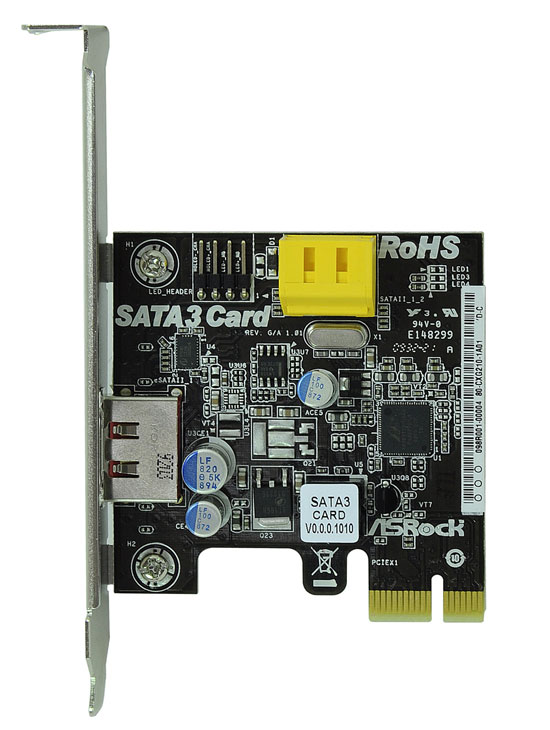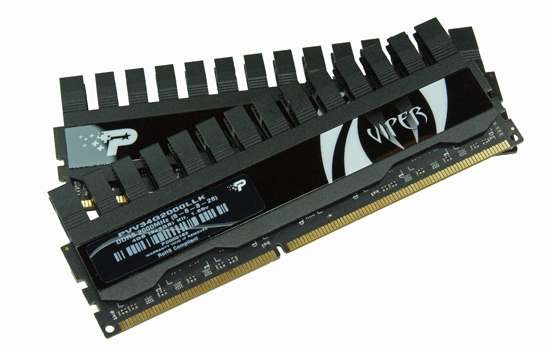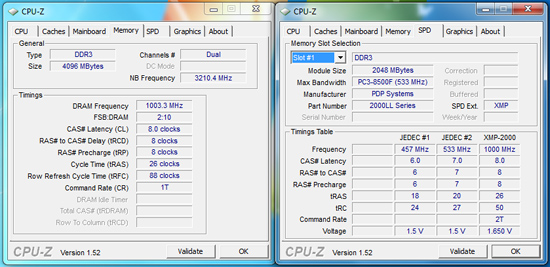Of Penguins, P55, and Patriot...
by Gary Key on August 18, 2009 12:00 AM EST- Posted in
- Gary's First Looks

We receive all sorts of unique products on a weekly basis and I use the term unique loosely in this case. Let’s just say a majority of these trinkets are barely good enough for target practice, much less taking up valuable shelf space. In fact, it is not every day we open a non-descript box in the lab and discover an Emperor Penguin snuggled amidst the packaging peanuts. Today was such a day and I have to say it was a pleasant surprise.
Actually, it was not a live emperor penguin, but a scaled down replica that doubles as a Bootable Linux USB (BLU) thumb drive. Linux, Penguins, USB drives, it’s all good as far as we are concerned. I made a promise to myself to refrain from using words like adorable or cute when describing this product. However, the female visitors in the lab used both words around 27 times when playing with, err, using the drive today. If that was not bad enough, the fact that 5% of the retail purchase price of the Penguin Drive is donated to the World Wildlife Fund means that I foresee more of these drives ending up in my home.
Active Media Products also manufactures the Polar Bear and Panda USB drives in capacities up to 16GB that feature the same partnership agreement with the World Wildlife Fund. However, our Penguin drive is unique as it comes with a full installation of Ubuntu Linux, version 9.0.4, and is setup as a BLU. Besides having a great Linux distribution installed and ready for quick use, the drive can also be utilized as a normal USB 2.0 storage device on just about any Windows or Mac system that features USB support. Windows 7 recognized it as a ReadyBoost device the first time we attached the drive.
If you have ever had a Windows installation go south, and to be honest who has not. Then this drive makes for an excellent emergency recovery solution as you can quickly back up critical files in a matter of a few minutes. The penguin drive comes in capacities from 1GB to 16GB and is made from non-toxic silicone rubber. It is also free of PVC, lead, and mercury so it probably would not hurt a penguin in the wild. Pricing ranges from $8.95 to $39.95, which is reasonable for this product.
We suggest you consider one of these drives the next time you a need for a portable USB device, not just because they are cute, affordable, and help a good cause, but due to the fact that they are actually well made and performed admirably in our initial testing.

We discussed the problems that several of the motherboard manufacturers had with the Marvell SATA 6GB (88SE9123) chipset earlier this summer. The problems were so bad in certain (dual chipset) configurations that Marvell had to respin the chipset. That left the motherboard suppliers either dropping the extra 6G SATA ports all together or installing the JMicron 3Gb/s (JM363/362) controllers in its place for additional SATA connectivity.
ASRock informed us that although it is too late to include the revised 88SE9123 chipset on its P55 Deluxe board, it not too late to offer it as an upgrade option via a PCI Express x1 add-in card. If you purchase their P55 Deluxe board when it is launched next month, the package will contain the add-in card that features an eSATA port along with two internal 6G SATA ports. Kudos to ASRock for coming up with this option quickly and including in it their product, now we just need the drive manufacturers to release some 6G capable SATA drives.

Besides a bevy of P55 motherboards arriving on a daily basis, we also have several P55 specific 4GB memory kits starting to make their way into the lab before the platform release next month. One of the first kits comes from Patriot Memory. Their new 4GB PVV34G2000LLK kit features 8-8-8-26 2N timings at DDR3-2000 on 1.65V. Our engineering kit contains the final IC and PCB selection, but the heatsink design will change before retail launch in a couple of weeks.

We decided to take this kit for a quick spin today and it had no problems running 8-8-8-26 1N timings at DDR3-2000 on 1.63V. We also set timings to 7-7-7-20 1N at DDR3-1600 on 1.58V on the same board. Look for this kit and others to be featured when the P55 platform launches (officially) shortly.
Speaking of the P55, if you were one of the lucky customers in the US to pick up a Core i5-750 or i7-870 at Frys last week and need a motherboard, then Provantage has an early selection of boards for sale. However, the prices are a higher than the suggested MSRP listings from Gigabyte and ASUS but that is the price to pay for being an early adopter.










50 Comments
View All Comments
Tanclearas - Wednesday, August 19, 2009 - link
Perhaps look at the motherboards that offer a slim Linux at boot time. I have seen news items describing such quick boot options that have firefox, IM client, and Skype.I'm not sure if those prevent access to the HDD, but it's worth looking into.
strikeback03 - Wednesday, August 19, 2009 - link
Dual boot with Ubuntu is pretty easy - install Windows first, and leave a blank partition. Then install Ubuntu to that partition - it will automatically install GRUB to give you a choice of which OS to boot when you start the computer.Assuming this bootable USB drive behaves like one you would make yourself, you can save your settings, so you could disable the automatic mounting of hard drives, or remove the NTFS driver entirely if you are really paranoid.
greylica - Wednesday, August 19, 2009 - link
They will probably release an capped chipset version too, and even if you buy 16 GB of DDR3 (2 pairs), they will only recognize 4 GB...In the early days of i815, via did a better chipset than intel, that recognizes 1,5 GB of Ram.
But now, Nvidia appears to be stopped by Intel claims over (strange) agreements for chipsets post LGA775.
Who will save our souls this time from capped Intel products like i5 ?
MadMan007 - Wednesday, August 19, 2009 - link
We just need Gigabyte to follow up their excellent EP45-UD3P/R mobo with an equivalently capable featured and priced P55 motherboard and we'll be set. The GA-P55-UD3R looks like it might fit the bill, I don't remember what P vs R means in Gigabyte-speak. Then we need a mATX board which forgoes PCI slots...mmmnirolf - Wednesday, August 19, 2009 - link
If I remember correctly R stands for RAID (ICHxR) and P for Crossfire/SLI enabled mb (2 full PCI-E slots).enterco - Wednesday, August 19, 2009 - link
No, you can't say that 'R' is for RAID or that 'P' does not have RAID, EP45-UD3P includes two SATA/RAID chips: the integrated ICH10R and a Gigabyte branded JMicron.TA152H - Wednesday, August 19, 2009 - link
Why would anyone in their right mind buy an i5, and then pay extra for a motherboard? Great idea, get a degraded processor setup for the same cost as the real one.People get so caught up with the hype, they don't realize this is just a lobotomized version of the i7. If the price isn't right, there's no point in it. So why pay extra for the motherboard?
They should have called this brain-damaged processor the i7SX. It's kind of like the 386SX from 20 years ago. It was a terrible processor at first, because it costed way too much, and ran slower than a 286 on code they could both run. Idiots still bought it, though. Why? Who knows. Eventually the prices came down where it really made sense if you couldn't afford a real 386, but needed the virtual 86 mode (essentially nothing used protected 386 early on).
I'm sure the i5, or lobotomized i7, will settle into a point where it makes sense, but if you're going to pay as much for it as a real i7, just because it's new, it's silly.
I still think it's shameful that sites put up picture articles of the Lynnfield motherboards. I've never seen so much hype over a degraded processor. For the original Nehalem and Conroe, sure. Not that the Lynnfield is worthless, it's just not very exciting. It's a mid-level processor. Strange how much build-up this one is having.
yuhong - Sunday, August 23, 2009 - link
"(essentially nothing used protected 386 early on)."Well, unfortunately IBM/Microsoft made the "mistake" of designing OS/2 1.x for the 286 processor, it was not until 1992 that IBM released OS/2 2.0 that took advantage of both the 32-bit capablities and the V86 mode of the 386 processor.
yyrkoon - Wednesday, August 19, 2009 - link
Why ?Because some people may be able to afford a $200-$300USD motherboard, but can not afford the price of the CPU that they would really like to match with it. At least, not *right now*.Or maybe, someone would like to have a similar system *now*, and wait for the processor they want to come down in price.
There is also another crowd, a crowd that I personally fit into. The "upgrade as you go" crowd. We buy parts that perform the best, for the best price. We also only buy just what we need( read: motherboard + CPU, possibly memory, and graphics cards).This way, we get what *we* want, keeping our system current, while paying the minimum possible( within reason of course, stability is paramount for me ). For someone who *does* upgrade his system every 6-8 months, I will *not* spend much more than $500. Why ? Because it does not make sense to *me*. Does it make sense to you ? Maybe not.
I could get into a big/long debate with anyone over this, but the simple fact is that someone else's needs may be different from yours, or mine. Me, I love PC games, but do not require SLI, simply because I do not require anything larger than a 19" LCD. So my requirements for performance are obviously going to be much lower. You on the other hand may want triple SLI, and play at a high resolution. Or maybe you can not stand to wait any longer for any given situation than you absolutely have to. There is nothing wrong with that, but these things are not a priority for me, and many others.
Concerning the 386/sx / 386/dx thing back in the 90's. I myself could afford $1100 for an 386/sx, but could not / did not want to afford $2300 for a 386/dx(and shortly there after the 486's). I was also relatively new to IBM compatible PC's even though had been using various other types of computers for years. A few years later though, I did manage to piece together a nice AMD 386/40 system, and it was every bit as good as most 486/sx system around.
TA152H - Wednesday, August 19, 2009 - link
You missed the point entirely, but probably so you could just pontificate and pose as someone for choice.The point is, if you have to pay extra for these new parts, so they cost as much as the i7, why? It's an inferior part, at the same price.
As I made clear, when the price falls to a point where it makes sense, it makes sense. But, why buy an inferior processors, and then pay over MSRP for the motherboard because it's 'new', and end up paying around the same as a superior system? It would be the same as some blockhead buying the Lynnfield with really expensive memory. At that point, unless the numbers change a lot from the earlier ones we've seen, you're better off with the real i7 and cheaper memory.
With the Lynnfield, the price has to make sense because it's a degraded processor. When you're paying extra for the motherboard, you're kind of missing the point. Unless it's only a little more, you're probably running into the i7 920 range, and that's the real deal, not a degraded version. Why eat rump roast when it costs the same as filet mignon?